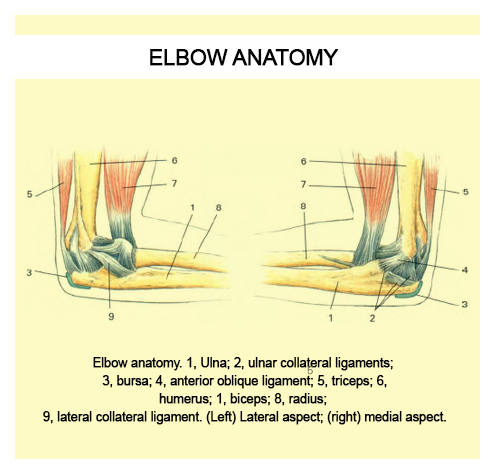The elbow is made up of a simple hinge joint that connects the upper arm bone (humerus) to the forearm bones (the radius and the ulna).
The actual joint is made up of the humerus and ulna; the bigger bony prominence at the end of the ulna is called the olecranon. The bony bumps found at the bottom of the humerus are called epicondyles; they are found on either side of the olecranon.
The elbow is a stable joint that has a lot of muscles, tendons (smooth, strong fibers that attach muscle to bone) and ligaments (fibers that attach bone to bone) crossing it. These tissues allow the elbow to move and act like a hinge:
- Bending your arm and wrist towards you (flexion)
- Straightening your arm or bending your wrist away from you (extension)
- Twisting your forearm or palm of your hand down or inward (pronation)
- Twisting your forearm or palm of your hand upward (supination)
How to Treat Your Elbow Tendon Injury
It is important to treat tendon injuries as soon as possible, as any activity or strain you put on your tendon can re-injure it further.
The trick with any tendon injury is getting it toheal with minimal scar tissue formation. Even with optimum healing, there is always less elasticity in a previously injured tendon. This will cause the tendon to hurt, during exercise and everyday activities. However, if you heal your injury efficiently and quickly, your chance of re-injury later on is much lower than average.
Allowing your elbow to rest is always recommended following injury. Avoid all activities that may have caused the injury or irritation and begin cold compression treatments as soon as possible. Blood Flow Stimulation Therapy™ (BFST®) promotes blood flow to heal your tendon faster and more completely than any other methods available.
Although steroid injections may provide temporary relief from the pain of tendinitis or tendinosis, they should generally be avoided as they weaken the tendon. If you do opt for an injection, doctors usually recommend that you do not participate in strenuous activities for several weeks to reduce the risk of a rupture.
